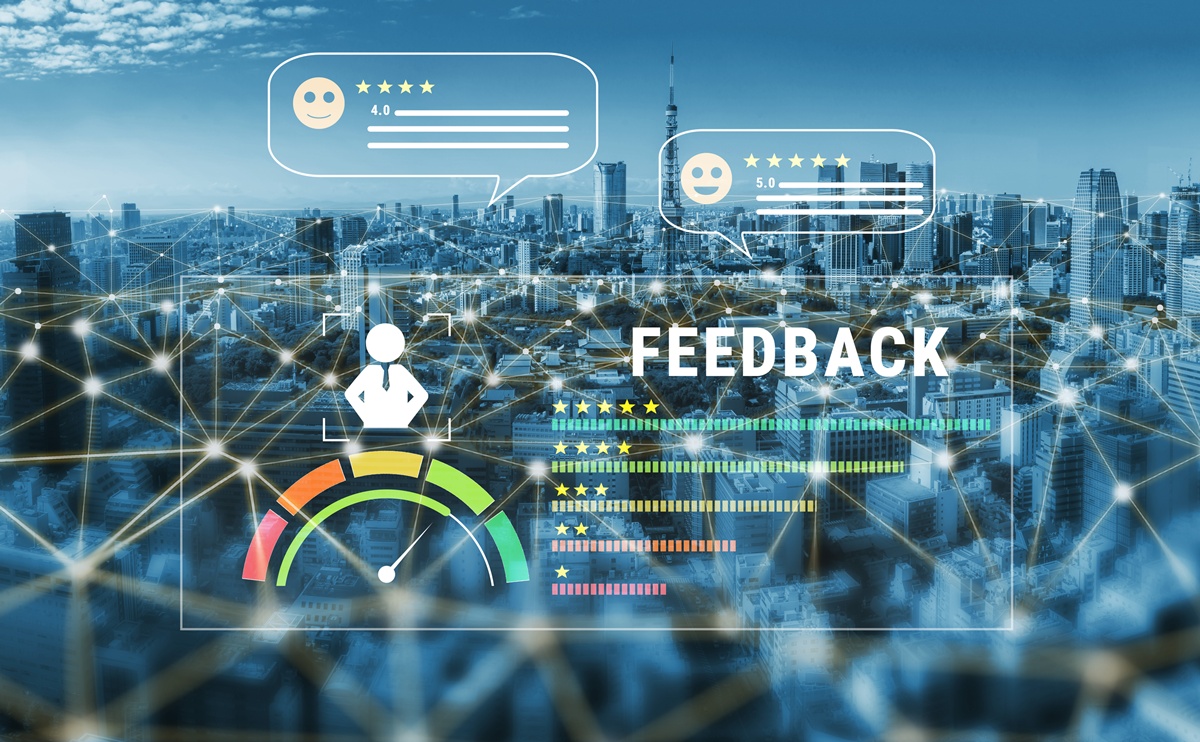October 31, 2025
The Complete Guide to Collecting Customer Feedback and Turning It into Action

Here’s the funny thing about customer experience. Companies spend huge amounts trying to understand customers who are already spelling everything out for them. It’s all right there in reviews, chat transcripts, post-support comments, and inbox messages. The problem isn’t a lack of feedback. It’s that most brands aren’t really listening or collecting customer feedback in ways that make sense.
Bain & Company once found that while 80 percent of businesses think they deliver an excellent experience, only 8 percent of customers agree. And since only one out of every twenty-six unhappy customers will actually complain, most of that disappointment never reaches the survey form. They just disappear.
This is why collecting customer feedback strategically matters. It’s the only way to see the truth of your customer relationships. Modern customer feedback tools make that possible in real time, capturing the signals customers leave behind across channels.
AI is even accelerating how companies interpret those signals. But data only matters when it leads to action. In the end, a customer feedback survey isn’t a form. It’s a conversation. The brands that remember that are the ones customers remember, too.
What Is Customer Feedback & Voice of the Customer?
Customer feedback is one of those business phrases that’s lost some of its meaning from overuse. It gets tossed around in meetings, pasted into slide decks, and then forgotten once the quarterly report lands. But in practice, it’s far more personal; it’s the running commentary customers leave on how your business fits into their lives.
Sometimes it’s direct: comments in a customer feedback survey or a handwritten note after a service call. Other times it’s indirect: a social post about a late delivery, a review that mentions the “friendly staff but confusing checkout,” or a quiet drop in repeat purchases that says everything without a word.
Every one of those signals is a piece of the Voice of the Customer, or VoC: the ongoing conversation between your brand and the people keeping it alive. It’s messy, emotional, and occasionally contradictory, but it’s also the closest thing a business has to truth.
The real skill lies in building what’s known as a feedback loop: Listen → Learn → Act → Close → Share. Listen to what people are saying. Learn what they actually mean. Act on it quickly. Close the loop by showing them you heard. Then share the results so others see that feedback leads to change.
The Business Benefits of Collecting Customer Feedback
Feedback doesn’t just show you what’s broken. It points you toward what comes next. Every comment or complaint is a clue. The companies that actually collect customer feedback often and look at it with open eyes are the ones that spot patterns early and make better calls.
Take Banorte, the Mexican bank that used Medallia CX Profiles to merge real-time survey data with customer records. Suddenly, branch teams could personalize conversations consistently. The result? Happier customers and smoother credit-card activations.
Feedback also fuels innovation. When Charles Tyrwhitt noticed an unusually high return rate on its boots, the company dug in. Every customer who returned a pair got a short customer feedback survey, and the answers revealed the problem: fit. The team reworked the entire line, and returns dropped.
Then there’s efficiency, a benefit that rarely gets the spotlight. Northern Trains unified 1.2 million customer records into one platform, freeing up roughly 4,000 hours a year that used to be spent piecing feedback together. Less admin, faster insights, happier passengers.
Open feedback can change how people see your brand. Take Happy Shuttle Cancun. They started using verified Feefo reviews and saw trust grow almost overnight. Their team set a rule: respond to any issue within four hours. That one habit lifted retention and earned them Feefo’s Platinum Trusted Service Award.
Even internally, feedback builds momentum. Teams that see their efforts reflected in customer comments get a shot of motivation that dashboards can’t deliver.
Methods for Collecting Customer Feedback
Once you accept that feedback is the heartbeat of customer experience, the next challenge is figuring out how to listen properly. Most teams start with good intentions and end up buried in spreadsheets that don’t tell them much. The trick is to focus less on volume and more on context.
There isn’t one perfect way of collecting customer feedback. The method has to match the moment and the mindset of the person giving it.
Surveys (CSAT, NPS, CES)
Surveys are the workhorses of feedback. They’ve been around forever, and when they’re done right, they still work beautifully. A good customer feedback survey is short, specific, and timed perfectly. A bad one feels like homework.
The best examples arrive right after a meaningful moment. A follow-up text after a delivery, a one-question pop-up after resolving a support ticket, or a QR code on a receipt.
Metrics like CSAT, NPS, and CES each tell a slightly different story. Satisfaction shows emotion. Promoter scores show loyalty. Effort tells you how much pain a customer went through to get what they needed.
Memorial Hermann Health System got this balance right. They added QR codes to outpatient and day-surgery areas so patients could respond in real time. NPS jumped 8.2% in one location and 6.4% in another. In their emergency department, a new concierge program pushed it another 10 points higher. Feedback came faster, and issues were fixed before patients even left the building.
Interviews & Focus Groups
Surveys tell you what people think. Conversations tell you why. Talking to a customer face-to-face, or even over a quick video call, brings out things you’d never get from a form.
Good interviews aren’t scripted. They have structure, but they leave space for emotion to surface. The best moderators know when to stop talking. A raised eyebrow or a pause often says more than another question. Focus groups add another layer with customers building off each other’s comments, agreeing, disagreeing, and filling in the blanks.
When you mix conversational feedback with your survey data, the picture suddenly becomes clear. The numbers show what shifted; the stories explain why.
Online Reviews & Third-Party Ratings
Surveys are what you ask for. Reviews are what you earn. They’re emotional, unfiltered, and very public. That’s exactly why they matter. Online reviews are now the loudest form of customer feedback out there. They’re often the first thing people check before they even land on your site. A few honest lines on Google can sway a buying decision faster than any marketing message.
The most valuable reviews are the verified ones. That “verified” badge signals authenticity, and customers can feel the difference. When Happy Shuttle Cancun started using Feefo to collect verified reviews, their visibility on Google shot up, their click-through rates improved, and their retention followed.
They also set a simple rule: every negative comment gets a personal response within four hours. That one change helped turn frustration into loyalty, and loyalty into awards.
Social Listening & Community Forums
Some of the best ways of collecting customer feedback don’t involve sitting around waiting to be handed it directly. Social posts, forums, Reddit threads, online communities – all of it counts.
Collecting customer feedback from these spaces takes a different kind of attention. You’re not asking questions; you’re eavesdropping on the conversation already happening. And that can be far more revealing.
Social listening tools can pick up patterns like recurring frustrations, product mentions, or tone shifts. But tools alone don’t interpret tone; people do. Someone needs to read between the lines, spot the emerging trend, and feed it back to the teams who can act on it.
SoundCloud does this well. Their community operations team calls themselves “the eyes and ears of the community,” connecting user sentiment directly to product and design.
Handled well, community feedback becomes an early warning system. It can tell you what’s about to go wrong weeks before it shows up in a customer service dashboard. Ignore it, and you’ll end up reading about it in a viral thread instead.
Collecting Customer Feedback That Makes a Difference
Getting feedback isn’t hard. Getting feedback that actually changes something is.
Most brands already have a dozen ways to ask what customers think. Pop-ups, surveys, post-purchase emails, star ratings, all of it. But if you ask too often, people tune you out. Ask too late, they’ve moved on. Ask badly, and they lie to get rid of you. Here’s how to improve your strategy:
Build the Right People and Platform Structure
Feedback programs die when no one owns them. They start with energy, then scatter across departments until the story gets lost. So give it a home. One person who wakes up thinking about the customer’s voice and has enough reach to do something about it.
Then make sure your customer feedback tools actually talk to each other. Too many companies still have surveys in one system, reviews in another, and chat data living on some island in support. When that happens, insights disappear in the cracks. Start small if you have to. A shared dashboard, a single source of truth.
Make Feedback Effortless
Nobody wakes up excited to fill out a survey. You’re interrupting their day, so at least make it painless. Put the form where the emotion is, like right after checkout, or at the end of a chat.
Language matters too. Lose the corporate tone. Instead of “We value your feedback”, try “How did that go?” or “Did we make this easy?” It sounds human, which makes people respond like humans.
Accessibility matters more than people think, too. Use clear fonts. Short sentences. Simple words. If the form looks cold or too long, most people will close it. Make it easy and human, and you’ll get honesty back.
Collect Across Channels
Customers talk where it feels natural. That might be a tweet, a one-star review, or a quiet message to support at 2 a.m. You can’t force everyone into a single form and expect to understand the full picture. So meet them where they already are.
Blend surveys with social listening. Mix structured data with messy comments. Pull it all into one place so your teams can actually see connections.
That’s what Northern Trains figured out. When they finally tied a million-plus records together, everything got faster: analysis, decisions, fixes.
Time It Right
Timing can make or break a response. Ask too soon, and people haven’t processed the experience. Ask too late and they’ve forgotten the details.
The sweet spot sits right where the experience is fresh. Right after a delivery lands. Minutes after a call ends. Moments after someone finishes using your product. That’s when memory’s sharp and emotion’s still in the room.
One mistake teams make: over-surveying. You can’t chase the same loyal customer every time they click a button. Cap it. One feedback request every few months per person is enough. Otherwise, they start to see you as noise, not curiosity.
Offer Value-Aligned Incentives
People will give feedback if they believe it matters. They’ll give more if it aligns with their values.
Sure, discounts or vouchers can work, but sometimes the better move is something meaningful. Happy added Feefo’s Treefo initiative to their review requests, planting a tree for every response. Their review rate jumped 73% year over year. No change to process, just purpose.
Outsource UK took the same idea further. They combined feedback collection with sustainability messaging, linking each response to environmental action. Their response rate exploded by more than 320%, and they strengthened their ESG story at the same time.
Ask Better Questions
You don’t need a twenty-question survey. You need five sharp ones.
Ask clear, direct questions that customers can answer without thinking too hard. “What nearly stopped you from completing your purchase?” will teach you more than “How satisfied are you?” ever will.
Keep the language simple. Mix up their order so the answers stay real. Always leave one open box that says, “Anything else you’d like to tell us?” That’s usually where the truth sneaks out.
Pilot your questions before rolling them out. If they confuse your team, they’ll definitely confuse your customers.
Blend Quantitative and Qualitative Data
Metrics are tidy. People aren’t.
Scores like NPS and CSAT give you numbers, but not the story. They’ll tell you what happened, never why it happened. That’s why you have to go through the open comments and the messy stuff, the words that don’t fit neatly in a spreadsheet. That’s where the real truth shows up.
Autodesk figured that out early. They built a system to scan thousands of open-text responses in minutes instead of days. That gave their team opportunities to dig deeper. They didn’t just count issues; they understood them.
But you don’t need AI to get there. A notebook, a few good questions, and someone who cares enough to read between the lines is a good start.
What to Do After Collecting Customer Feedback
Collecting customer feedback is one thing. Making sense of it is another. Most teams get buried under their own data: surveys, reviews, chat logs, endless spreadsheets. The goal isn’t to read it all. It’s to find what actually matters and move on it fast.
Start by separating signal from noise. Count what you can count: scores, response rates, trends, but don’t stop there. Dig into the unstructured stuff: the offhand comments, the rants, the small notes that say more than a metric ever could.
Ally Financial figured this out. They used AI to go through every written comment their customers sent. It found 109 repeating problems, and the team fixed 103 within a few months. The goal wasn’t fancy automation. It was speed. Spot the problem early, act before it spreads.
Once you see what’s happening, focus your energy. Look at how often an issue shows up and what it’s costing you in time or loyalty. Start there.
That’s exactly what Banorte did when they layered customer feedback into their CX profiles. By spotting where friction spiked during credit card activation, they redirected attention and resources to those moments.
Always finish the conversation. When someone gives feedback, they deserve to know it meant something. Send a short thank-you. Post an update. Mention the fix. Staying silent makes people stop caring. Action does the opposite, it keeps them with you..
The Future of Collecting Customer Feedback
The future of feedback about collecting smarter data, and doing something with it fast enough that customers notice.
Artificial intelligence has already started to change how teams listen. It’s scanning thousands of reviews, tagging emotions, spotting trends, and predicting churn before it happens. It’s impressive. But the real value comes from mixing automation with human understanding.
Best Western saw that firsthand. When they automated the way they pulled in and analyzed TripAdvisor reviews, their review count jumped 76%, and their scores rose 30%. But it wasn’t just the tech that mattered; it was people reading between the lines, shaping training and service improvements based on what those reviews actually meant.
Acting faster is more important, too. As Medallia’s Mike Debnar said, “Customers expect you to act in the moment, not in the next quarter.”
We’re heading toward a world where a spike in negative sentiment triggers an instant workflow, where an emotional keyword in chat logs can flag a manager, and where a system can predict which customers are about to walk away before they even say so.
Collecting Customer Feedback: The Loop Never Ends
Listening isn’t a phase in customer experience. It’s the whole job.
Every survey, every chat log, and offhand comment online is the voice of the customer, trying to tell you something. Most companies hear it. Few actually listen.
The difference shows. The ones who listen turn feedback into motion. A broken link gets fixed. A policy gets rewritten in plain English. A frustrated customer comes back because someone finally answered the question that’s been ignored for months.
That’s what collecting customer feedback is really about. You don’t need a massive program to start. Just one place where people can talk to you and one habit of acting on what they say. Fix one thing. Then another. Then another. The feedback won’t stop coming, so you can’t stop listening.




